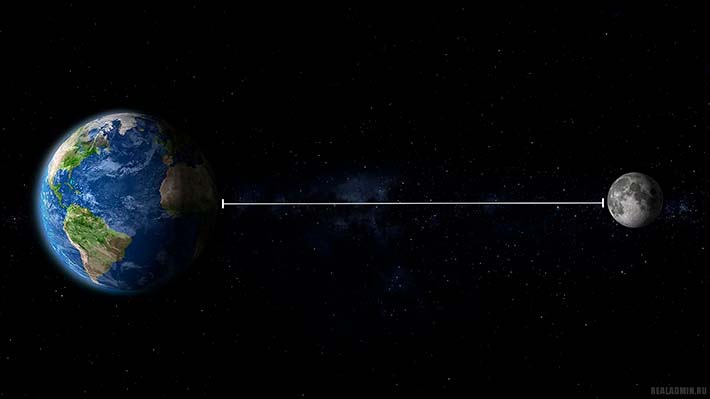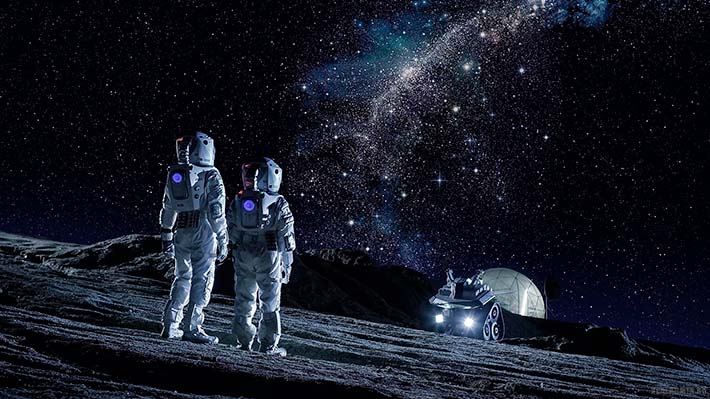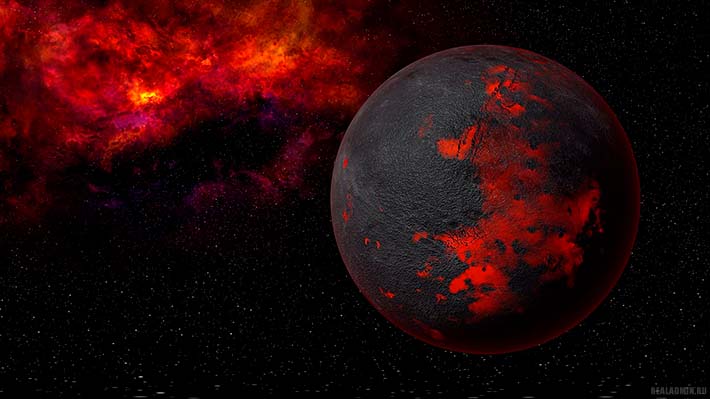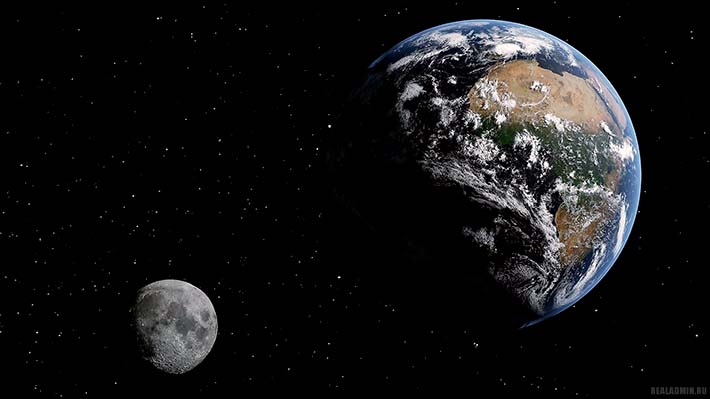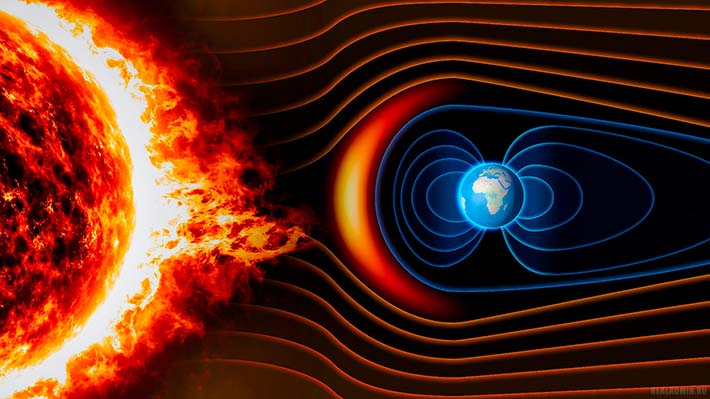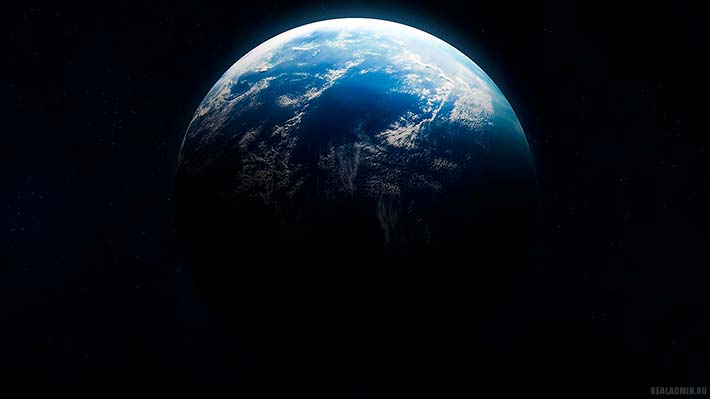Best space wallpapers on PC desktop

A selection of high-quality wallpapers for your computer desktop on the theme of space in a resolution of 1920x1080 with interesting scientific information.
Astronomy makes the soul look up and takes us from this world to another. But before climbing to the stars, a person needs to learn how to live on Earth.
Plato && Clifford Simak
Between Earth and the Moon
Download «Between Earth and the Moon»
The moon has both a maximum and minimum distance from the Earth. During its furthest approach to the Earth, the moon is about 251,000 miles away. During its closest approach, the moon is around 226,000 miles away. Although the difference between these two numbers may not seem like much, it’s a difference of about four Earths. How the distance between the Earth and moon changes may not seem too important, but it actually has a profound impact on our world and how we see our nearest celestial neighbor.
Black hole
The scientific definition of a black hole is fairly simple. Basically, a black hole is any object with a gravitational pull that has become so strong that not even light can escape it. Theoretically, any object with mass can become a black hole if it becomes dense enough. If you were to squish the Earth to only a couple inches across, the density would become so high that the Earth would become a black hole.
International Space Station
Download «International Space Station»
For most people, the only space station they are likely familiar with is the International Space Station (ISS). This is not surprising since the ISS has been in orbit for over 23 years and has served as humanity's primary habitat in space for decades. Construction of the ISS began in 1998. The ISS is a joint project from multiple countries, including the United States, Russia, Japan, European Union, and Canada. Although the United States and Russia provide most of the funding and technology, every member state offers different forms of technology that help make the ISS one of the greatest examples of international cooperation. After Russia's Mir space station was decommissioned, the ISS became the largest artificial object in Earth's orbit, and it is still expanding. Scientists continue to develop and add new modules to the space station, the latest of which was attached in 2021. The ISS has had its lifetime extended multiple times, and it has currently received enough funding to continue operating until 2030. Since 2000, there has always been someone aboard the ISS, making it humanity's longest continued presence in space. As of 2022, the ISS has been visited by 251 astronauts from 20 different countries.
Space travelers
Together, the United States and Russia (including the former Soviet Union) have the largest number of space travelers. As of 2019, the United States has sent a total of 339 people into space, which represents more than 50% of the world's space travelers. Coming in second, Russia has sent 117 humans into space. The United States and Russia have sent 456 people into space, or 76% of the world's total space travelers. The remaining 24% of space travelers are divided among several other countries, the most notable of which are Japan, Germany, China, and France, all of which have sent ten or more people into space.
Exploration of the universe
Download «Exploration of the universe»
The most powerful telescopes can see up to 13-billion light-years away. Even in just our solar system, scientists have fully mapped all planets. Scientists have made more accurate maps of the surfaces of Mercury, Venus, and Mars than they have of Earth’s oceans. Given this information, it may seem as though humanity has explored more of space than Earth’s oceans.
The fastest planet
The fastest planet ever discovered was found in 2013 by NASA’s Kepler Space Telescope. Named Kepler-78b, it orbits its star at a distance of only 900,000 miles. For comparison, Mercury orbits the Sun at a distance of 36 million miles. With very little space between Kepler-78b and its parent star, the planet orbits its Sun at extreme speeds. It takes a mere 8.5 hours for Kepler-78b to complete one orbit around its star. Imagine living on a planet where a year is only 8.5 hours. As of yet, no other planet has been found with a shorter orbital period, making Kepler-78b the fastest known planet in the universe.
Super moons
Super moons are events that occur when a full moon is at its closest point to the Earth. Interestingly, a super moon will appear 17% brighter and 30% larger than when a full moon is at its farthest approach. Another interesting event can occur if a solar eclipse happens to coincide with the moon’s farthest approach. If the moon happens to pass in front of the Sun while it’s 251,000 miles away, it will not completely cover the Sun. Rather, a ring of sunlight will form around the moon, creating what is called a ring of fire solar eclipse.
Solar radiation
The Sun is the nearest star to us at 93 million miles. Despite that vast distance, the sheer energy from the Sun is powerful enough to warm our world and sustain all life. The Sun is constantly emitting a flow of radiation called the solar wind. The solar wind is composed of countless particles that have been charged with high amounts of energy from the Sun. These high-energy particles are deadly to life on Earth and can damage the very structure of our DNA. Thankfully, the Earth has developed natural barriers that protect us from solar wind. The Earth's magnetic field is our primary form of defense against the solar wind. This field is produced due to Earth having an iron core that spins. Iron can conduct electricity, and as it turns, the moving electric charge creates a magnetic field.
Global ocean
The ocean is a massive body of saline water that covers approximately 72% of the Earth's surface. According to NOAA, there is only one Global Ocean. However, this ocean has been divided into distinct named geographic regions by countries and oceanographers. Today, most nations including the United States recognizes five ocean basins, namely Arctic, Atlantic, Indian, Pacific, and Southern. Together, they hold around 97% of the water found on Earth and significantly influence global weather patterns and food supply chains. The ocean houses a plethora of marine organisms ranging from marine microbes to the world's largest animal, the blue whale.
Rings
Any discussion on rings must begin with Saturn. After all, Saturn’s rings were the first to be discovered, and most of what is known about rings in the solar system comes from Saturn. Saturn’s rings are the most visible rings in the solar system and can even be seen with a small telescope or binoculars. The rings were first observed in 1610 by Galileo Galilei, yet his telescope was not powerful enough to discern their full shape. Galileo believed that he had discovered two large moons on either side of Saturn. In 1655, the astronomer Christiaan Huygens became the first scientist to claim that Saturn was surrounded by a large disk. Knowledge of Saturn’s rings was lacking at the time as early astronomers had no way of determining their size, mass, and composition. Most astronomers assumed that Saturn’s ring was solid. In 1675, Giovanni Cassini discovered that the large ring around Saturn was actually made up of a multitude of smaller rings. Rather than being surrounded by a single ring, Saturn was surrounded by an entire system of rings with large gaps dividing them.
